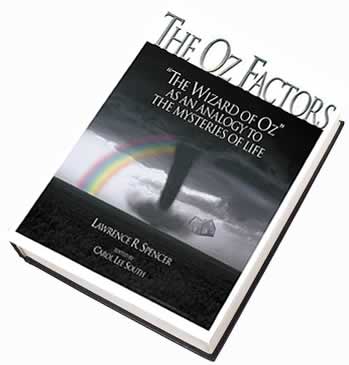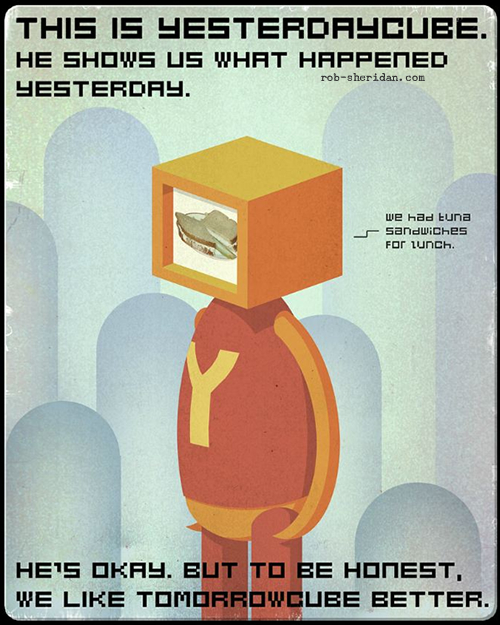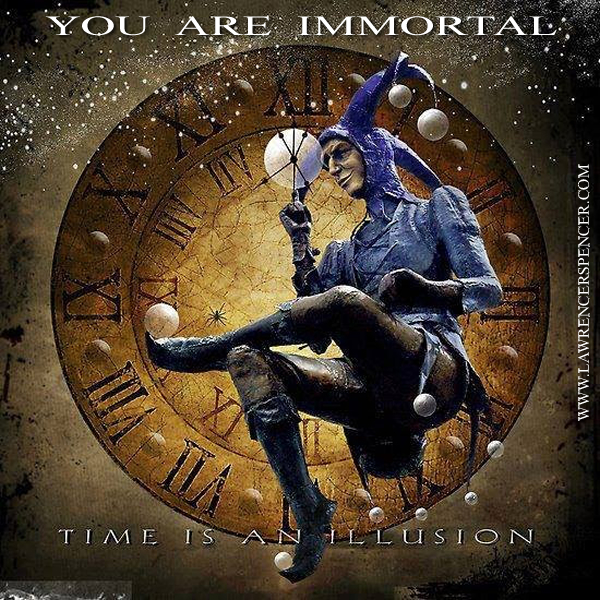Republished by Blog Post Promoter
Tag Archives: time
AN ILLUSION
A MOMENT IN THE ETERNAL NOW
Republished by Blog Post Promoter
SCIENCE TIME vs OZ FACTORS TIME
Republished by Blog Post Promoter
 Scientists at the Scientific Research Centre Bistra in Ptuj, Slovenia, have theorized that the Newtonian idea of time as an absolute quantity that flows on its own, along with the idea that time is the fourth dimension of space-time, are incorrect. They propose to replace these concepts of time with a view that corresponds more accurately to the physical world: time as a measure of the numerical order of change.
Scientists at the Scientific Research Centre Bistra in Ptuj, Slovenia, have theorized that the Newtonian idea of time as an absolute quantity that flows on its own, along with the idea that time is the fourth dimension of space-time, are incorrect. They propose to replace these concepts of time with a view that corresponds more accurately to the physical world: time as a measure of the numerical order of change.
This view doesn’t mean that time does not exist, but that time has more to do with space than with the idea of an absolute time. So while 4D spacetime is usually considered to consist of three dimensions of space and one dimension of time, the researchers’ view suggests that it’s more correct to imagine space-time as four dimensions of space. In other words, as they say, the Universe is “timeless.”
It appears that so-called “scientists” are beginning to catch up with me. Or maybe they finally read my book, THE OZ FACTORS, published in 1997, in which I made the following observations about time:
 “HOW OLD IS “FATHER TIME”?
“HOW OLD IS “FATHER TIME”?
Time is a subject that is far from absolute. The measurement of time is the activity of monitoring the movement of matter or energy particles through space. In order to establish the passage of time, one must establish an agreed-upon reference point for beginning the period of time to be measured. Then, the increments of measurement must be uniformly consistent throughout the period of time being quantified. This set of qualifying factors, however, applies only to the Physical Universe.
Does time (as the Munchkins would say) morally, ethically, spiritually, physically, positively, absolutely, undeniably and reliably actually, really exist?
Imagine that you are completely isolated, unable to observe any physical motion whatsoever–no sun, moon and stars, night or day. If you were isolated from your own body such that you could not detect any breathing rhythm or heartbeat or cellular motion of any kind to use as a reference point, would time exist?
People who have been locked in solitary confinement, whether in a prison or in an isolation chamber, have experienced the phenomenon of “no time”.
Since many people seem to have an innate, built-in time sense, or a “biological clock”, there may be a subjective awareness of time. But, even so, time is determined by measuring some motion in the physical universe.
How can the dates of something for which you have no starting point be measured? How can the age of our planet, our galaxy, or the entire physical universe be determined? How can the age of something which does not exist in the physical universe, such as a spirit, be calculated? Logically, an arbitrary unit of measurement must be chosen. Then a particle or object which can move through space must exist. This particle would have to travel at a uniformly predictable rate of speed. The unit of measurement would depend on the magnitude or size of the motion of the particle relative to a fixed point in space, or a fixed point of view.”
— Lawrence R. Spencer, Author
PRESCIENT ESCHATOLOGY
Republished by Blog Post Promoter
 Some years ago I undertook the study of a heretofore unknown “science” which I named “Prescient Eschatology”. Being the inventor and first practitioner of this new “science”, I endowed myself with the honorary title of “Doctor of Prescient Eschatology“. My first action of “predicting the future” was that I would become a student and professor of this new philosophical / theological / ontological / logical discipline. Although highly esoteric in nature, the subject has maintained a vast appeal to nearly all of humanity throughout it’s brief history on Earth. Everyone wants to know the past and predict or create the future!
Some years ago I undertook the study of a heretofore unknown “science” which I named “Prescient Eschatology”. Being the inventor and first practitioner of this new “science”, I endowed myself with the honorary title of “Doctor of Prescient Eschatology“. My first action of “predicting the future” was that I would become a student and professor of this new philosophical / theological / ontological / logical discipline. Although highly esoteric in nature, the subject has maintained a vast appeal to nearly all of humanity throughout it’s brief history on Earth. Everyone wants to know the past and predict or create the future!
Pre·scient /ˈpreSH(ē)ənt/ Adjective — Having or showing knowledge of events before they take place.
Eschatology (from the Greek eschatos/eschatē/eschaton meaning “last” and -logy meaning “the study of”, first used in English around 1550) is a part of theology, physics, philosophy, and futurology concerned with what are believed to be the final events of history, the ultimate destiny of humanity. In the context of mysticism, the phrase refers metaphorically to the end of ordinary reality and reunion with the Divine.
The most obvious point of departure for the student into the subject of Prescient Eschatology is the fundamental understanding that time in the physical universe is an “eternal now”. For the practical purposes of my study I use the following definitions:
A) Time is a measurement of the motion and change of position of objects in space within the eternal now of the physical universe.
B) The future is a logical extension of:
1) volition (the act or power of making choices or decisions) and 2) momentum (the product of the mass and velocity of an object) within the eternal now of existence in the physical universe.
Therefore, if we want to predict, change or create a future we must understand and/or alter volition and momentum by any means that can be effected on them. The means and methods of creating a future are nearly infinite in an eternal now of possibilities.
As for the “past”, time travel, changing the past, memory of the past, etc., these are a discussion of “subjective reality” or personal opinion. The “past” is entirely dependent upon the experience and opinion (whether agreed upon or not) from the unique point of view of each individual observer of the motion of objects in space, i.e. time. The study of “time travel” is the singular topic of interest for which I have become a member of the highly exclusive and secretive society: THE ORDER OF OMEGA TIME TRAVEL CULT. Should anyone be interested in becoming a member of this highly esoteric organization, please inquire using the contract procedures available through this Blog.
Enjoy The Journey of The Eternal Now!




